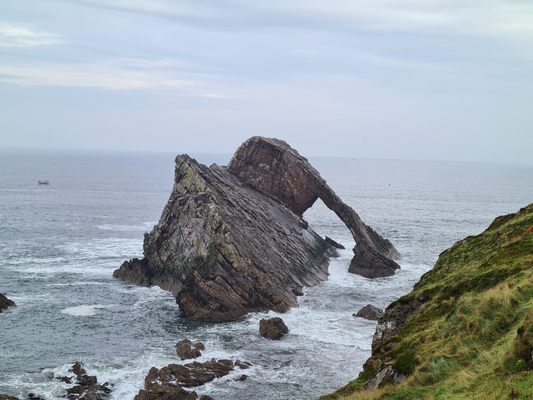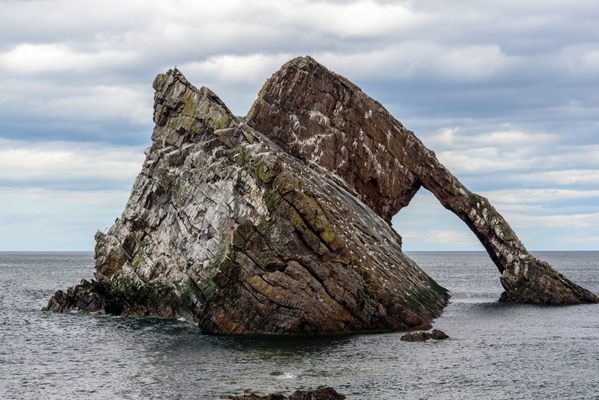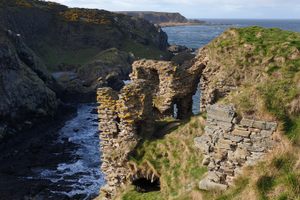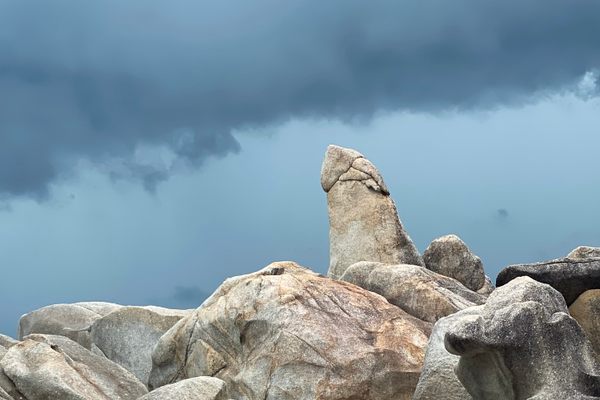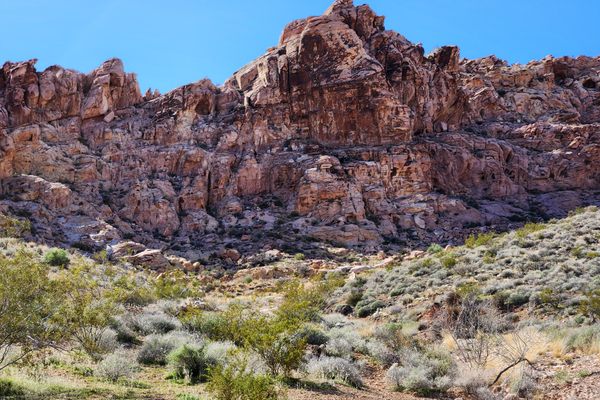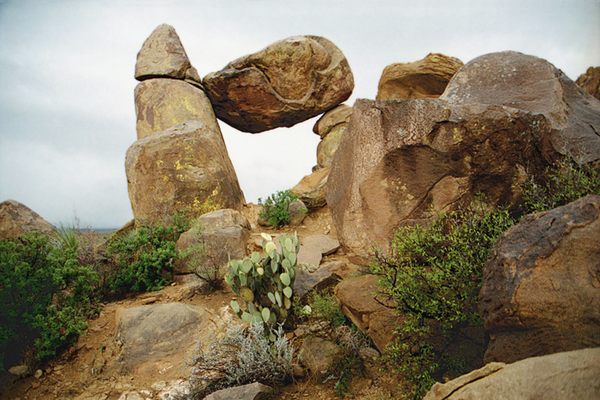About
Just off the coast of northeastern Scotland is a large arch called Bow Fiddle Rock. The 50-foot-tall rock formation was named for its resemblance to the tip of a bow used to play a fiddle or a violin.
Bow Fiddle Rock formed over the course of millions of years of natural erosion. It is part of the Cullen Quartzite formation, a stretch of metamorphic rock found along this part of the Scottish coast. Originally, the rock would have been sandstone layered under the sea. Over millions of years, sediment built up over the sandstone. With that pressure and heat from deep underground, the sandstone transformed. Its silica grains fused together, resulting in a new, harder type of stone called quartzite.
As land masses shifted and collided over the course of geologic history, many of the undersea formations were pushed to the surface, where the wind and sea shaped them into the structure we see today.
Bow Fiddle Rock is more than just a tourist attraction. It serves as an important nesting site for a number of sea birds, and bottle-nosed dolphins and porpoises feed in the water around the base of the rock. The RAF uses the area around Bow Fiddle Rock on maneuvers and Tornado and Jaguar fighter planes can be seen and heard flying around the area.
Related Tags
Know Before You Go
There are a couple of cliff top walks that provide changing views of Bow Fiddle Rock.
Flavors of Scotland: Beyond the Haggis
Smoked seafood, single malt whisky, and warm hospitality.
Book NowPublished
November 10, 2022
